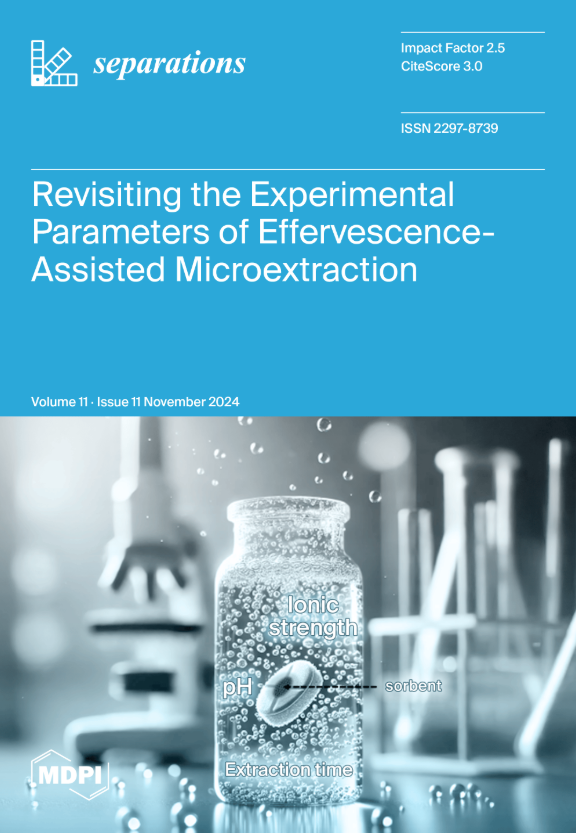植物精油提取、分离和纯化方法的研究进展
IF 2.7
4区 工程技术
Q3 CHEMISTRY, ANALYTICAL
引用次数: 0
摘要
精油,也被称为液体黄金,以其广泛的应用和生物活性而闻名。60多年来,EOs的现代应用受到越来越多的关注。珍贵的EOs是用各种方法从植物原料中提炼出来的。由于萃取、分离和纯化方法决定了环氧乙烷分子的类型、数量和立体化学结构,以及最终的收率和质量,因此选择合适的方法至关重要。介绍了植物精油及其主要挥发性化合物的传统提取方法(加氢蒸馏法、蒸汽蒸馏法、有机溶剂萃取法等)和分离纯化方法(色谱法、大孔树脂法、化学反应法等)。本文就这些方法的原理、工艺、特点及应用进行综述,以便更好地了解纯植物EOs的制备,并进一步指导其大规模应用。本文章由计算机程序翻译,如有差异,请以英文原文为准。
Research Progress on Extraction, Separation, and Purification Methods of Plant Essential Oils
Essential oils (EOs), also called liquid gold, are known for their wide range of applications and biological activities. The modern use of EOs has received increasing attention for more than 60 years. The precious EOs have been refined from plant raw materials using a variety of methods. Since the extraction, separation, and purification methods determine the type, quantity, and stereochemical structure of EO molecules as well as the final yield and quality of EOs, the selection of an appropriate method is crucial. The traditional and emerging extraction methods (hydrodistillation, steam distillation, organic solvent extraction, etc.), as well as separation and purification methods (chromatography, macroporous resin, chemical reaction, etc.), of plant EOs and their main volatile compounds were shown. Our review focused on the principles, processes, characteristics, and applications of these methods, so as to better understand the preparation of pure plant EOs and further guide their large-scale use.
求助全文
通过发布文献求助,成功后即可免费获取论文全文。
去求助
来源期刊

Separations
Chemistry-Analytical Chemistry
CiteScore
3.00
自引率
15.40%
发文量
342
审稿时长
12 weeks
期刊介绍:
Separations (formerly Chromatography, ISSN 2227-9075, CODEN: CHROBV) provides an advanced forum for separation and purification science and technology in all areas of chemical, biological and physical science. It publishes reviews, regular research papers and communications. Our aim is to encourage scientists to publish their experimental and theoretical results in as much detail as possible. There is no restriction on the length of the papers. The full experimental details must be provided so that the results can be reproduced. There are, in addition, unique features of this journal:
Manuscripts regarding research proposals and research ideas will be particularly welcomed.
Electronic files and software regarding the full details of the calculation and experimental procedure, if unable to be published in a normal way, can be deposited as supplementary material.
Manuscripts concerning summaries and surveys on research cooperation and projects (that are funded by national governments) to give information for a broad field of users.
The scope of the journal includes but is not limited to:
Theory and methodology (theory of separation methods, sample preparation, instrumental and column developments, new separation methodologies, etc.)
Equipment and techniques, novel hyphenated analytical solutions (significantly extended by their combination with spectroscopic methods and in particular, mass spectrometry)
Novel analysis approaches and applications to solve analytical challenges which utilize chromatographic separations as a key step in the overall solution
Computational modelling of separations for the purpose of fundamental understanding and/or chromatographic optimization
 求助内容:
求助内容: 应助结果提醒方式:
应助结果提醒方式:


